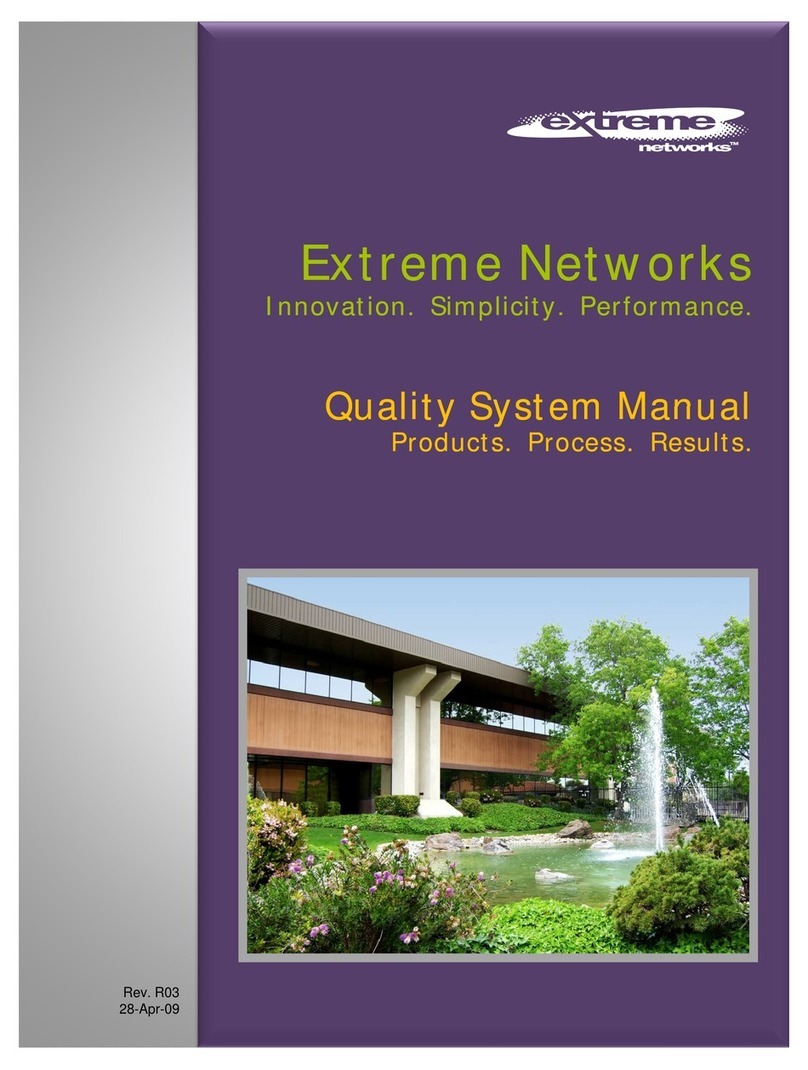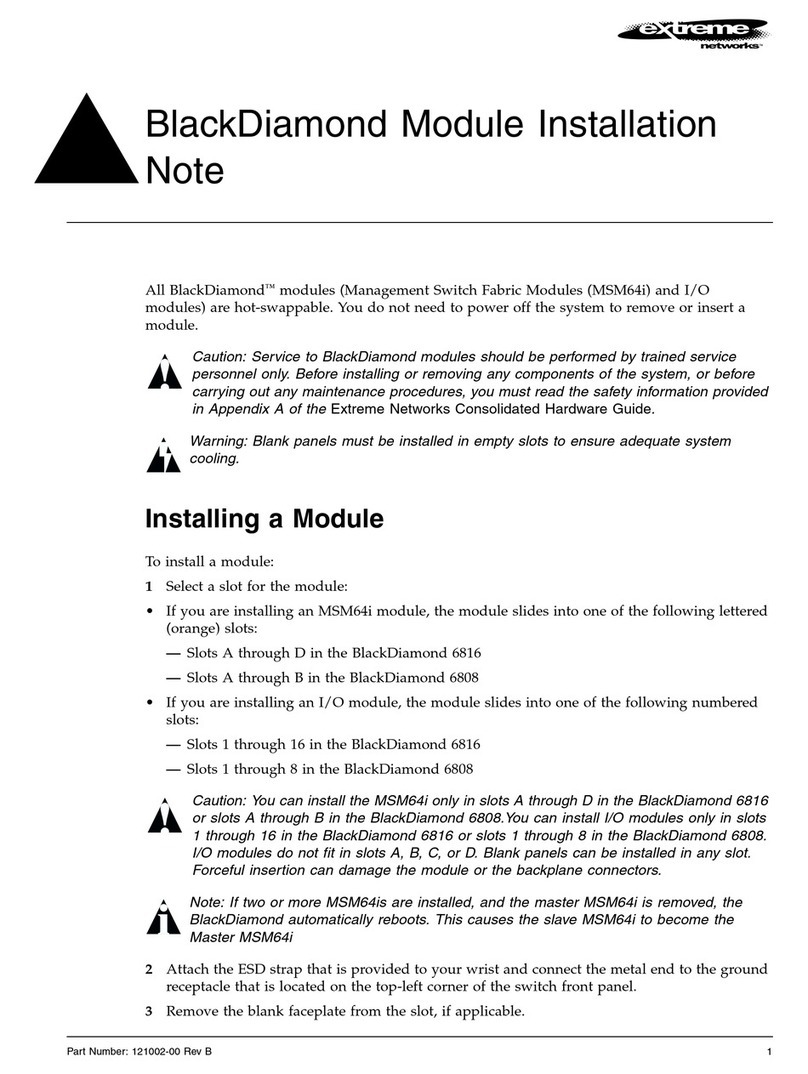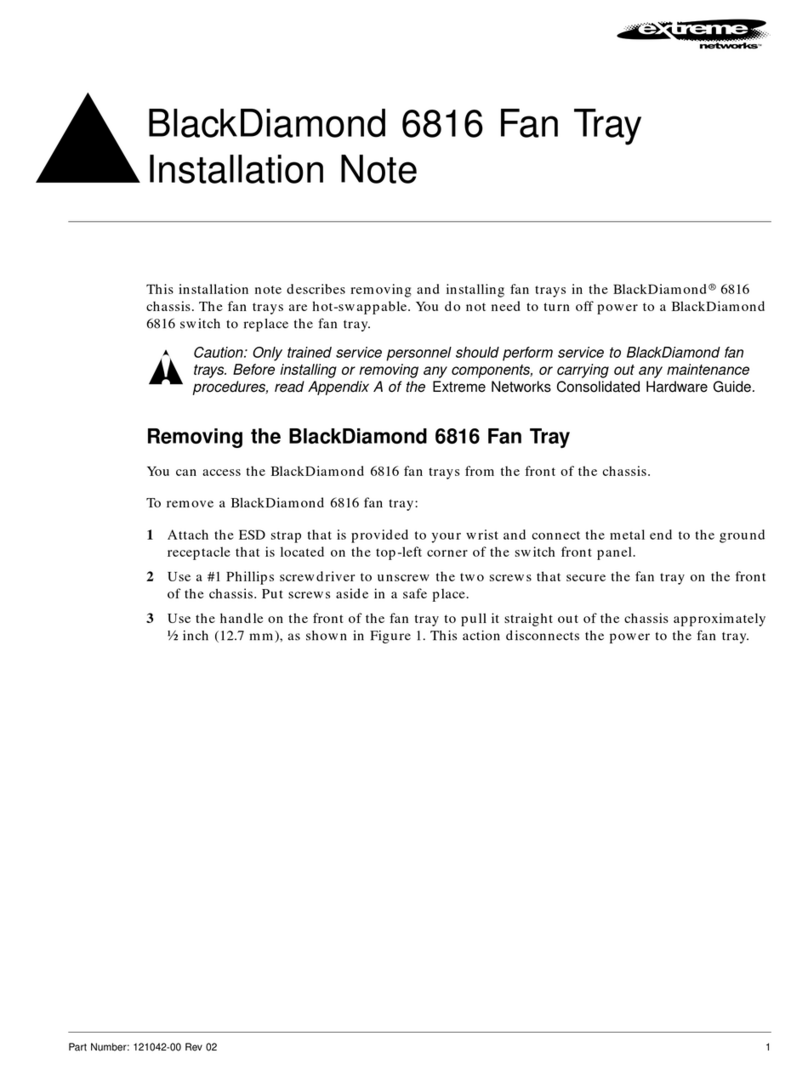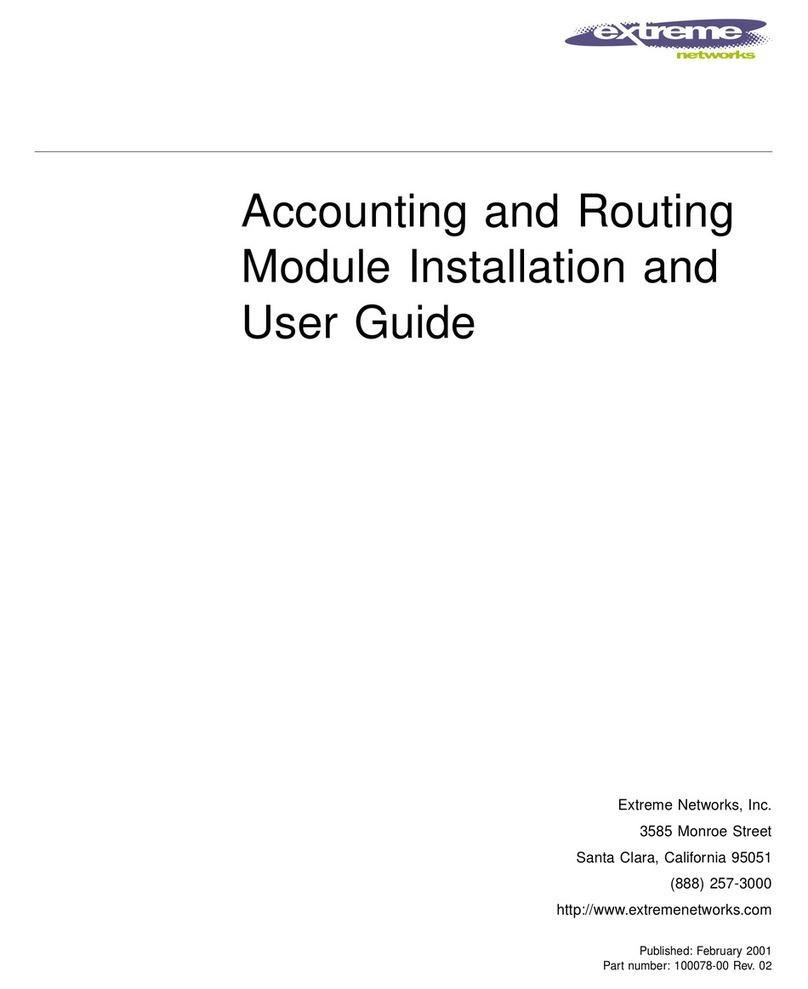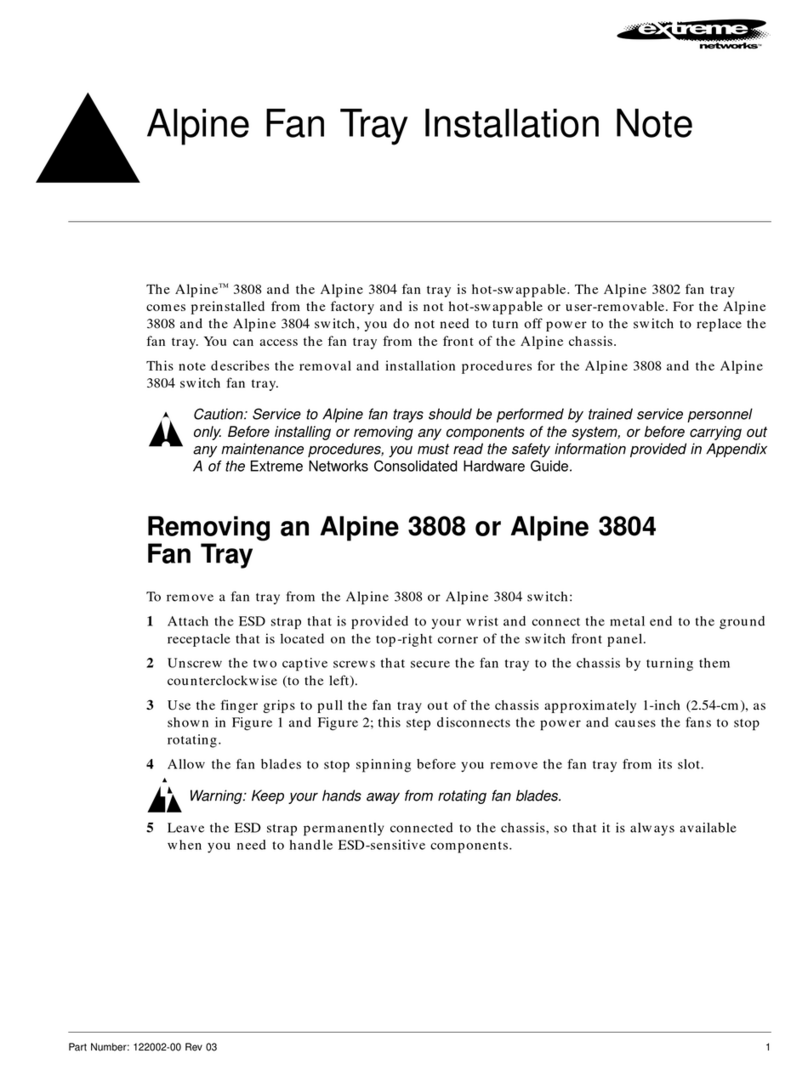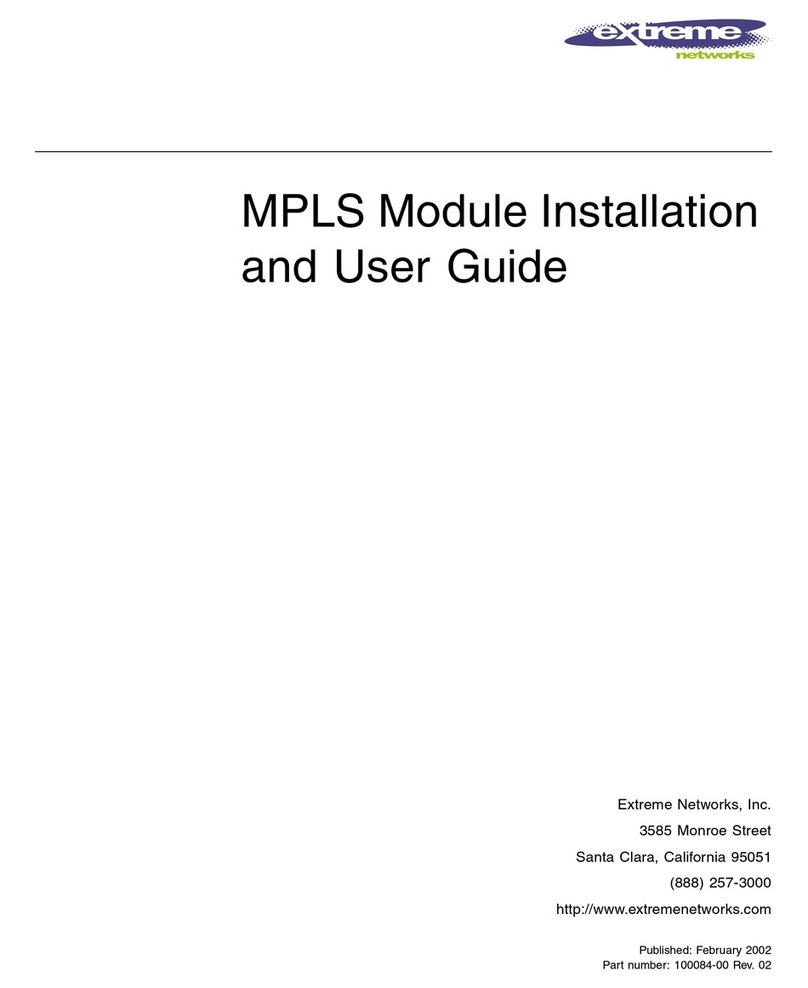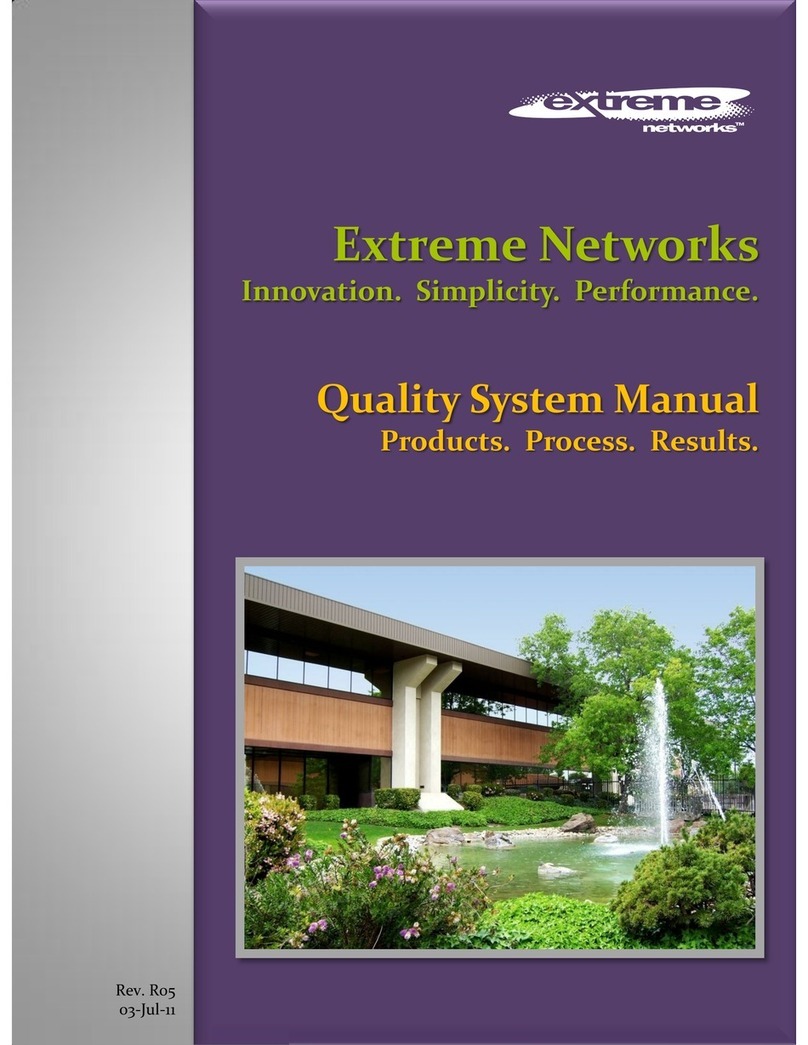
8Hitless Failover and Hitless Upgrade User Guide
Configuring ESRP for Hitless Failover
•Cause of the last failover
•Failover configuration (link action, preserve state, slave configuration, timeout)
•ESRP failover mode
•Failover status for the supported subsystems (configuration, layer 2 hardware, layer 3 hardware, STP,
EAPS, ARP, ESRP)
Each of the supported subsystems display one of the following states:
—disable—Hitless failover is disabled. This is also the initial state.
—initial—Hitless failover is enabled, but the downloading of the subsystem state has not yet started
for a particular subsystem.
—xfr—The subsystem’s state is in the process of being transferred to the slave. The state transfer
includes all of the state for that subsystem.
—ready—The subsystem has received its state download. In the ready state, it may receive updates
to its internal states.
—failed—The subsystem encountered a failure. To clear the failure, reboot the slave MSM.
—unknown—If this state is displayed, contact Extreme Networks®Technical Support.
—<not available>—The state and reason for the current slave shows this if the slave is in the
process of being rebooted or is not present in the chassis.
After a reboot or insertion of a slave MSM-3, use this command to ensure that the slave is ready before
initiating a hitless failover.
Configuring ESRP for Hitless Failover
Extreme Standby Router Protocol (ESRP) operates at both the layer 2 and layer 3 levels. An ESRP
instance has the following states:
•Neutral—The initial state when ESRP is enabled.
•Slave—The slave switch is available to assume the responsibilities of the master switch if the master
becomes unavailable or criteria for ESRP changes. Forwarding is disabled.
•Pre-master—The ESRP pre-master switch is ready to be master but is going through possible loop
detection. Forwarding is disabled.
•Master—The ESRP master switch is responsible for responding to clients for layer 3 routing and
layer 2 switching for the VLAN. Forwarding is enabled.
During the initialization of hitless failover, an ESRP instance is placed in the neutral state. Therefore, a
switch that is in the master state and experiences a non-hitless failover is placed in the neutral state.
This may result in a loss of traffic and the election of a new master.
To prevent standby nodes from renegotiating when the master node attempts a hitless failover, the
master switch sends a notification to the standby nodes indicating a hitless failover attempt. The
standby nodes increase their timeout values so they do not elect a new master. After the master
recovers, it resumes normal communication with the standby nodes, and the standby nodes recognize
the continued presence of the master. All unicast flows are preserved, and the ports retain the same
state throughout the failover.
